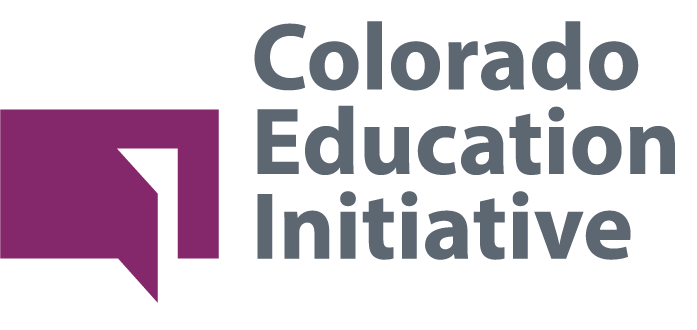Opportunity Emerging From the COVID-19 Chaos
April 9, 2021
By Landon Mascareñaz, CEI Vice President of Community Partnership
A year ago, I was in a session with a group of education leaders from around Colorado on the subject of leadership in crisis. At this point, we were a few weeks into the COVID-19 lockdown, shocked about the scale of change we were seeing across the globe and asking ourselves what could be done.
I remember one colleague asking aloud, “How will we know when we can build a better future?”
Crisis leadership must not be only about understanding how to make it through the worst of the challenge, but also about helping yourself and others awaken to the real opportunity that emerges amidst the chaos.
Nearly a year later, as I watched President Joe Biden speak and read the details of the pandemic relief package — the American Rescue Plan — and other initiatives, I had a dawning realization we had arrived at that moment of opportunity.
We now have a once-in-a-generation chance to rebuild and redesign our public infrastructure, if we can be honest about the real challenges we face.
Over the last year, in too many communities across the country, closed public systems have lurched from one crisis to the next, failing to either solve present challenges or imagine a different future. We must see these challenges in our public systems, democracy, social fabric and our pandemic as a combined syndemic — intersecting crises that affect families across our country.
We see this in uneven vaccine distribution in communities of color, increased violence towards Asian-Americans, our sad recurrent tragedy of gun violence in Colorado, and yes, in the inequitable distribution of learning during the pandemic.
We must confront these closed systems with community-driven redesign and open-system thinking that would ask us to redesign education, policing, and infrastructure.
The more time one spends with the American Rescue Plan and considers the ongoing reopening of our public schools, the more one cannot help be moved by the consequential opportunity to rebuild our country and rejuvenate our democracy.
Thanks to our U.S. Sen. Michael Bennet and others, the revamped child assistance tax credit now will directly channel needed dollars to more than 90% of American families. Combined with other direct dollars, this new investment could reconfigure power dynamics in our American project. An opportunity is emerging for a renewed commitment to families and communities in both rural and urban communities, across races and classes.
In education, over $170 billion will be channeled to update, modernize and build the 21st century learning infrastructure in K-12 and higher education we need to defeat COVID, get schools open and prepare for the future.
It’s inspiring that many states prioritized educators in vaccine distribution. Our educators should take this overdue regard and channel it to lifting up a new dialogue with their community — not just for their professional status, but for a new vision of working with families and communities to transform learning.
In the rush of the crisis, many parents, educators and students understandably want a return to “normal,” and sadly too many systems are eager to give into this false goal. The rescue plan’s $170 billion for education (over $1 billion estimated to be allocated in Colorado) cannot be a blank check for a technocrat’s wish list; it must be a down payment on a future we know we must build, where families and communities should have real voice in how resources are deployed.
But we should also be cautious as false promises could end up eroding community trust at a critical moment.
Here in Colorado, our governor has led with a significant investment to build the next generation of open system and equity-seeking opportunity engines at the local level through the Response, Innovation, and Student Equity Fund (RISE) grant program. This $35 million investment has the potential to be a game changer for our state, focusing on bringing together K-12, early childhood education, workforce programs and higher education to achieve goals they could never do alone.
From the Colorado Education Initiative’s experience working and supporting multiple RISE grants in K-12, and from my vantage point on the Colorado Community College System’s board, I believe initiatives like these are harbingers of our open future.
This opportunity for revitalization goes beyond the traditional school year and institutions. At the Colorado Education Initiative, where I am vice president for community partnership, we are supporting a growing coalition that called upon our state leaders to enable an equity anchored “Recovery Summer” that breaks down the institutional silos, bringing K-12 districts, early childhood centers and out-of-school-time providers together.
And in a similar move to the American Rescue Plan’s direct support of families, our coalition has called for limited financial assistance for families to expand learning opportunities this summer.
The pattern is clear: if we empower families and communities directly, we can accelerate change.
This spring, President Biden has asked for us to come together and called for a wartime posture to defeat the virus and build a new America. If we are to build together, we must see real power in liberation from our legacy closed systems of the past and move into the bright light of openness, where communities have the power to choose and design how resources are spent and decisions are made.
Building a future where we harness this shared responsibility for community-driven redesign to emerge from this crisis is to design a renewed society that would astound and honor our ancestors. This new foundation could reinvigorate our public systems and potentially reignite the American dream and begin to bind together our imperfect union after our year of crisis.
